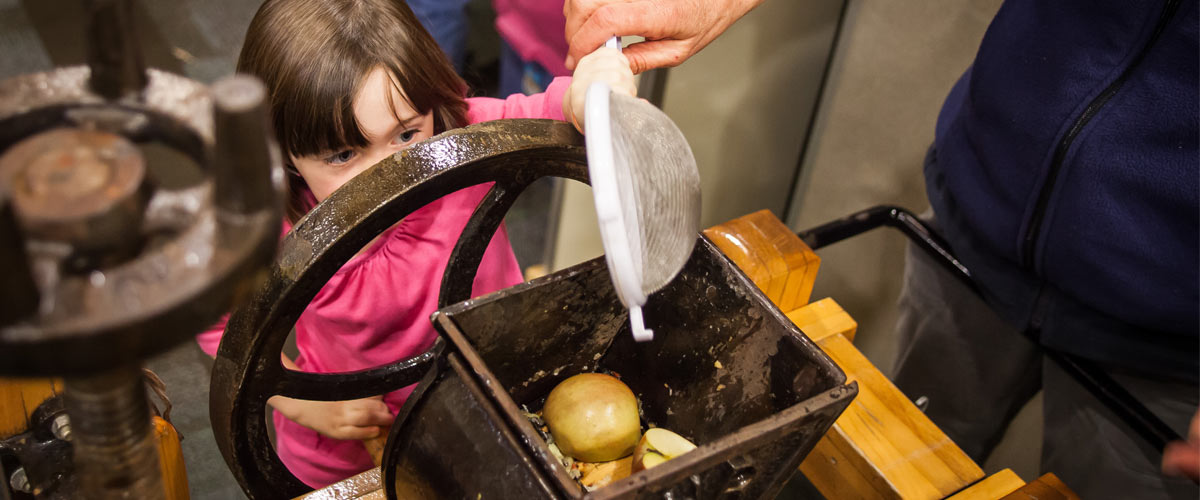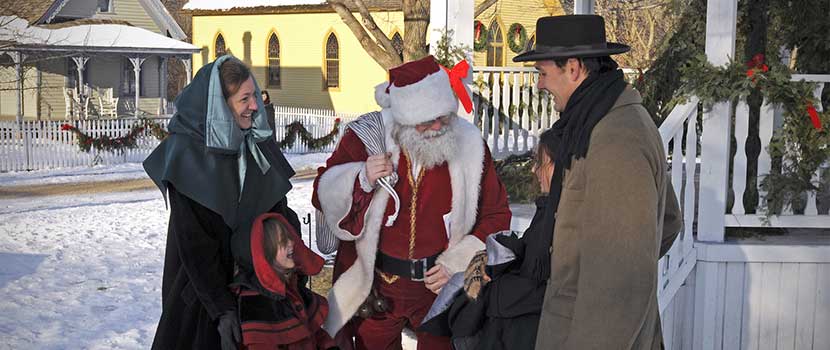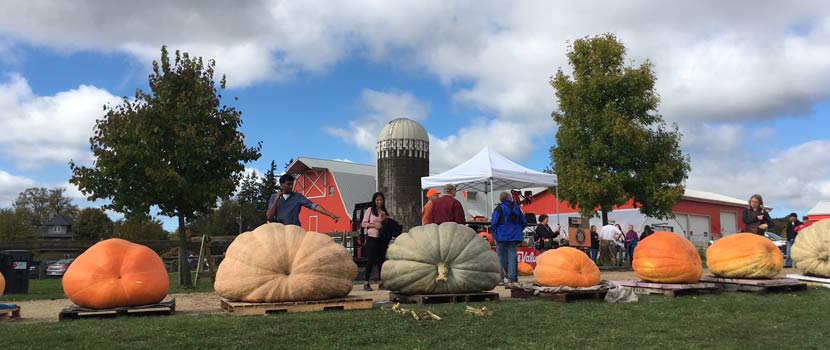
Hard Cider: A Story of War, Immigration and Prohibition
By: Brandon Baker
October 11, 2018
Category: History
As students spin the crank wheel, and apples get ground into bits, I watch carefully to make sure we don’t end up with finger cider. The sweet smell of apples fills the air as they fall from the grinder into the bag we will mash them in.
Soon, they will turn brown, and we will squeeze them and listen to the splash of cider filling our pitcher.
As I make apple cider with the students, it is a rich opportunity to teach about science. The ground apples turn brown when exposed to air because the starch in the apple is turning to sugar. The browner the apple, the sweeter the taste.

For the adults, I can discuss the history. Even though hard cider was the drink of choice early in American history, people hardly drink apple cider today, and hard cider is only recently making a resurgence.
Making apple cider is an annual tradition at Eastman Nature Center, and it is a tradition that goes back thousands of years. Why did cider disappear, and how did this affect our parks?
Alcohol Instead of Water
In the early days of America, people did not drink water very often. Diseases such as typhoid fever and cholera were real threats from drinking water.
Instead, hard cider was the drink of choice — even children drank it. The alcohol in the cider killed bacteria, preventing diseases that water could carry. Between 1800 and 1830, the average American drank 23 gallons of alcohol each year; hard cider made up 15 of those gallons.
The Civil War and Temperance Movement
During the Civil War, women took control of the farms and businesses as their fathers, husbands, and brothers went off to fight; many also significantly aided in a war effort for the first time in American history. When everyone returned from the war, the men expected their wives to go back to their old roles and give up their independence.
In addition, the men came back different. They suffered what we now know is post-traumatic stress disorder (PTSD), but at the time nobody knew what that was. Many men came back violent, and they tried to forget what they saw by drinking more hard cider and other alcohol. The drinking and PTSD helped fuel domestic violence.
After being independent during the Civil War, often for the first time in their lives, the women whose husbands came back realized they had the power to change their circumstances.
They rekindled the Temperance Movement to end drinking. They held rallies and protests. They chanted sayings such as “No lips that touch alcohol shall touch mine.” The Temperance Movement, strengthened after the Civil War, was the first death knell for hard cider.

Immigration and Manifest Destiny
The second death knell was immigration. Elm Creek Park Preserve was settled in the late 1850s by homesteaders largely from Switzerland, Germany, and Poland. While hard cider was an English drink, these immigrants preferred beer.
The quick westward expansion of Manifest Destiny also favored beer, as it takes a year to clear farmland and grow the wheat, barley, and hops needed for beer, whereas it takes up to 10 years for an apple tree to grow mature enough to bear apples. If you were continually moving west, there was no time to wait for an apple tree to mature.
Maybe even more importantly, the Temperance Movement was largely made up of Protestants whose ancestors came from England, the primary drinkers of hard cider. Therefore, while the beer industry continued to grow as more European immigrants moved to America, hard cider consumption declined as more drinkers of hard cider joined the Temperance Movement.
I think it is interesting to note that while the average American of English descent drank 15 gallons of hard cider a year, it was the Irish who were drunken louts because they did not drink the right kind of alcohol; the Irish drank beer and whiskey while the English drank hard cider and rum.
Prohibition and the Rise of Beer
Eventually Prohibition was made the law of the land, but it was a law passed by members of the Temperance Movement. It was not a law wanted by all of the new citizens from Germany, Switzerland, Ireland, or Poland who preferred to drink beer. Therefore, people kept making beer, even though it was illegal.
On the other side, apple orchards were cut down and burned. Before Prohibition, apples were largely used for hard cider and baking. Apple growers, who literally saw their future going up in flames, invented phrases like ”an apple a day keeps the doctor away” to encourage people to start eating apples. Sweeter apples more suitable for eating were developed and planted.
By the end of Prohibition, the only apples left were those for eating, not for making hard cider. And thus, beer became the drink of choice, and the resource needed to make hard cider — cider apples — had been completely destroyed.
A New Age for Apples
New orchards planted after Prohibition were planted with sweet apples for eating. In fact, several were planted on the land that eventually became Elm Creek Park Reserve.
One of those orchards can still be found today. Mr. Blesi had recently come back from World War 2 where he had been a demolitions expert. He decided to use his knowledge gained during the war to start his own orchard.
He went to the hardware store, bought some dynamite, and went back to his land. He placed ¼ stick of dynamite on the ground, covered it with a blanket, and blew it up. The craters were perfect for planting his apple trees in. While we don’t know the variety of apple he planted, we do know that he planted a sweet apple for eating.
Cidering Legacy
The Civil War, Temperance Movement, immigration, and Prohibition resulted in hard cider going from the most popular drink in America to a special treat we drink unfermented in the fall. This impact is seen when you go to the grocery store and see all the apples ready to be eaten, an adaptation by apple growers to survive Prohibition.
The fall of cidering is something that still has an impact on the park I work at. Random apple trees grow in Elm Creek Park Reserve, the result of farmers throwing apple cores they finished eating into their fields. Something they would have not have done before Prohibition, as people did not eat apples then.
Today, hard cider has gained popularity and people are trying to develop cider apples again, though it is still far from its old place as the king of drinks.
Back at the Cider Press

The apples have turned brown, they have been squeezed and all of the juice is out of them. The students cheer as I hold up the pitcher full of brown liquid and the adults crowd close to try this fall treat. It always amazes me how much history is in a sip of apple cider. Next time you try a sip at a program or at home, think about the wars, social movement, and immigrations that have shaped your cider.
About the Author

Brandon Baker has been an interpretive naturalist at Eastman Nature Center for 10 years. Before working for Three Rivers Park District, he worked as a naturalist for the National Park Service, Wood Lake Nature Center and Springbrook Nature Center. He moved to Minnesota from Florida for the snow, and he is a big fan of Star Trek.
Related Blog Posts
Have you ever wondered why we “deck the halls with boughs of holly” each December or why we light Hanukkah menorahs on midwinter nights? Read on for more about the unknown stories and history behind some of our holiday traditions.
Pumpkins: More Than a Spiced Latte
By: Tim Reese
From pumpkin pie to pumpkin carving to giant pumpkin contests to the (infamous?) pumpkin spice latte and even pumpkin-flavored wheat ale, pumpkins are a favorite fall crop with a rich history.
A Grimm Dairy Tale
By: Bill Walker
Did you know that we wouldn't have locally made ice cream, butter, cheese curds and other dairy products if it wasn't for one determined farmer who settled in Carver County in the 1800s? Read on to learn about Minnesota's great dairy tale; alfalfa will never look the same.



